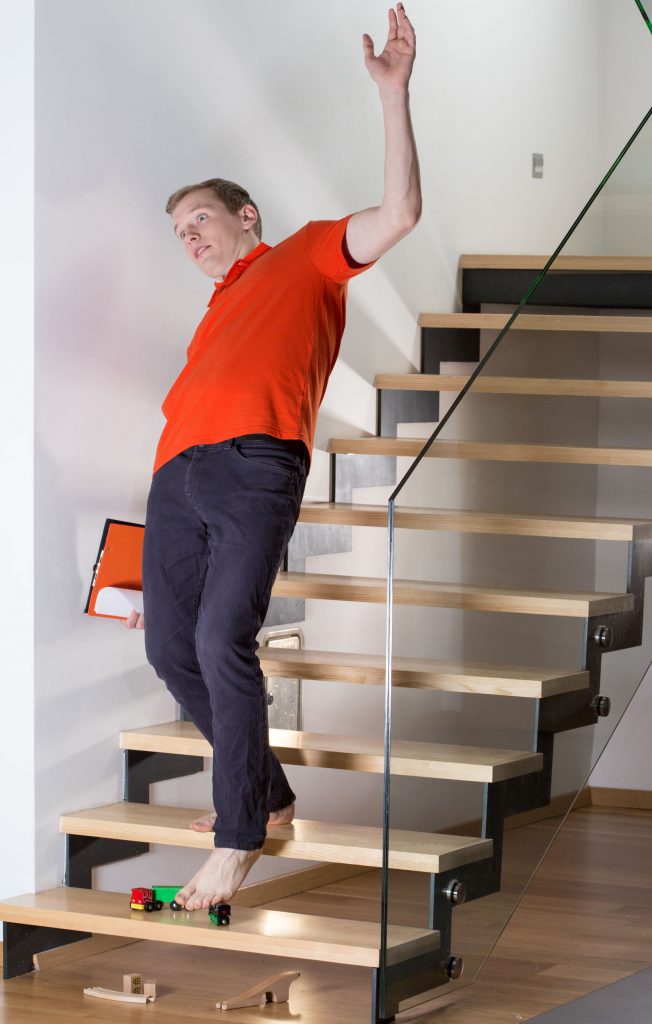
Creating safe, inviting, accessible, and visitable living spaces is the focus of aging in place design
The month of September is designated as “National Falls Prevention Month,” and we have looked at the importance of this a few other times this month – looking at falls, fall prevention, and other aspects of this dangerous and troublesome aspect of aging and home navigation. We even concluded that falls – as much as we try to avoid, prevent, or minimize them – can and still do happen for a variety of reasons.
When we factor in poor or weak vision, depth perception issues, how using multiple focus eyeglasses (bifocal, trifocal, readers, or variable focus) can make looking down somewhat tricky, balance concerns, taking medication that has a side-effect of dizziness, stumbling by catching a shoe while stepping, wearing shoes with slippery soles (or ones that tend to grip too well), and just losing one’s balance can contribute to a falling episode.
Sometimes falls can result from trying to avoid something that looks like it is present or that actually is in our path – a dog toy, a piece of paper or small box, something that has dropped onto the floor, a children’s toy (even if it belongs to grandchildren), a small spill, or something similar. We may not notice it until we already are committed to moving our foot into the place where the object is located (or where think it is) and we awkwardly try to adjust our step to keep from breaking what we might be stepping on or to avoid hurting our foot or ankle. The adjustment may cause us to lose our balance as we are shifting our weight, and we might fall as a result.
Restricted access and passage, dizzying furniture or wallpaper patterns, not enough light, and glare that hides surfaces or creates the illusion of wetness or uneven surfaces are dangers that we cannot afford to let exist as long as we have some say in correcting them. This is our challenge – for our own residences, for our relatives and friends, and for our clients (and for any of their visitors or guests).
Looking out for and removing potential hazards in pathways and passageways in and around the home is one of the strategies that we have available for creating successful aging in place and helping us promote more home safety. It’s part of a larger concept known as visitability – for those living in the home plus anyone who comes into that living space from the outside. We want anyone using the living space to remain safe while they are there.
We know that avoiding falls relates to personal safety – how well someone’s home or apartment allows them to exist within it safely. However, it’s much more than just how the residents of that living space can function safely within it. It applies to anyone who comes into this space for any reason and for however long that might last from a few minutes, to hours, to a few days, to an extended stay – the concept of visitability.
We want the fall weather to be enjoyable with cooler temperatures after the hot summer months, refreshing breezes, and a beautiful array of fall colors. We want fall to be available as a season and not as a condition that someone experiences where they are potentially injured.
Falls aren’t limited to the elderly, but it seems to be more serious when it happens to people who aren’t quite as physically prepared to absorb a fall or rebound well from an accidental stumble or fall. Many factors contribute to this including a person’s flexibility, bone density, and balance.
Whether it is our personal residence, that of a parent or other loved one, a neighbor or someone else we know, or one that we have been retained to improve, we have a huge responsibility to make the living environments as safe to use and be in as possible. As aging in place specialists, we know the danger that clutter, congestion, and unnecessary materials generate in an interior space. General busyness of patterns and furniture, too much glare, and lack of contrast also contribute to potential falls.
Anything that restricts or interferes with mobility and use of a space – narrow or cluttered passageways, small doorways, door and cabinet hardware that is difficult to reach or use, and slick or difficult to walk on flooring – is something that we need to fix for our clients. Of course, beginning in our own homes will improve them first and then give us the insight and practice to take our focus to others who can benefit from it.
Let’s take “Falls Prevention Month” as a reminder that this is a top priority all year (and not just September) – creating and maintaining visitable (safe, comfortable, convenient, and accessible) dwellings for everyone that we have the ability to do so.
